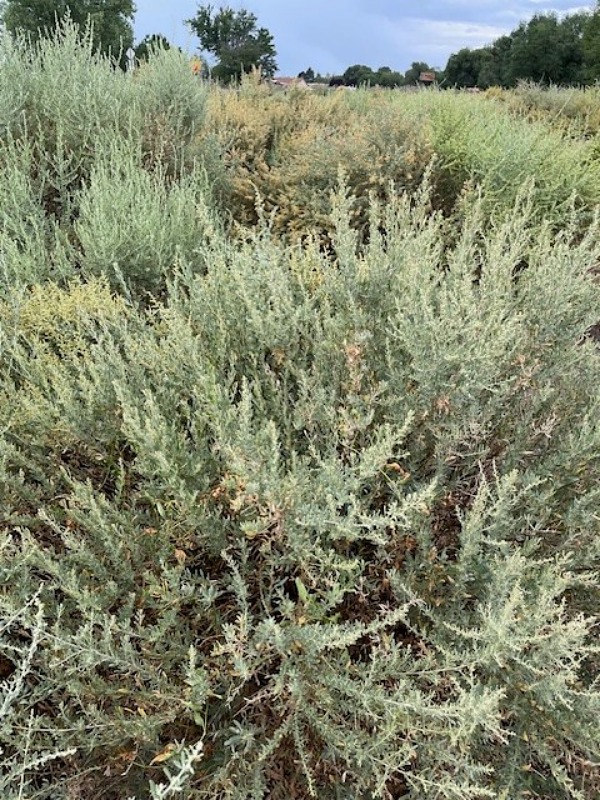Aztec Ruins National Monument, NM
Ethnobotany Series
| • Four-wing Saltbush |
| ➠ Globemallow |
| ➠ Prickly Pear Cactus |
| ➠ Rocky Mountain Bee Plant |
| ➠ Sages |
| ➠ Threeleaf Sumac |
| ➠ Yucca |
| ⇩ Print Hard Copy (PDF 465 KB) |
Four-wing Saltbush
The shrub commonly called Four-wing Saltbush (Atriplex canescens) is widely distributed throughout the western United States and has served many purposes for indigenous peoples including the Hopi, Isleta, Jemez, Navajo, and Zuni. These plants can grow in dry alkaline or sandy well-drained soils up to 8 feet in height, and, if the soil depth allows, their root system can go down to 20 feet!Although the leaves and seeds are edible and were sometimes boiled and eaten as greens or parched and ground up as a type of flour, the primary food use was either as a salty seasoning or as a leavening agent for bread. When the leaves are roasted and go to ash, the heat changes the structure to sodium bicarbonate, which is the same as baking soda. This ash would be mixed in with ground corn and cooked to make Hopi piki bread, for example, and this gave it a bluish color.
Another major use for saltbush was for medicinal purposes. One way the Jemez people used it was to burn the leaves to revive someone who had fainted or was badly injured. Another common use was to grind and crush the flowers and roots into a paste to treat ant bites, wasp stings, or even boils and warts.
Besides being used in food or for medicinal purposes, there were two other major uses. The flowers were sometimes boiled together with twigs and leaves to create a yellow dye, and the wood was often burned as one of the major kiva fire fuels.

